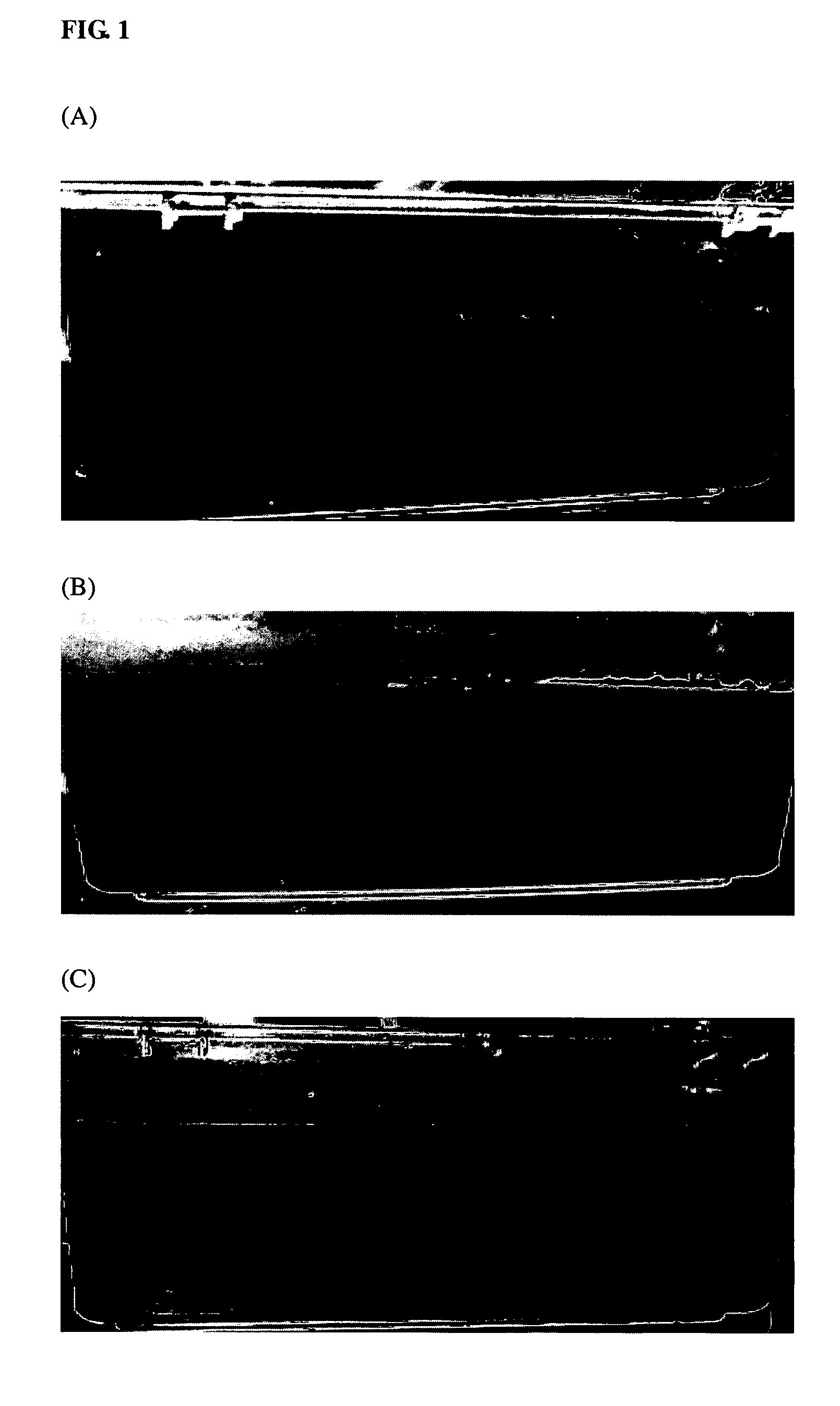Novel composite for inhibiting algae growth and use therof
a technology of composites and algae growth, applied in the direction of biocide, deodrants, water/sewage treatment by substance addition, etc., can solve the problems of clogging of filters in water filtration devices, algae growth in small amount of water retained in containers, and high undesirable effects, and achieve the effect of sufficient exposure of test subjects
- Summary
- Abstract
- Description
- Claims
- Application Information
AI Technical Summary
Benefits of technology
Problems solved by technology
Method used
Image
Examples
example 1
Preparation of Ceramics Chondrite Coating of Nanosilver-Zinc Oxide Whisker-Pink Tourmaline Mixture
Procedure I:
Preparation of Base Carrier—Polyporous Ceramics Chondrite
1. Material
[0044] Materials: clay; nano-Al2O3; nano-ZrO2; nano-SiO2 and nano-SiC. [0045] Control factors: purity, density, chemical to compose, powder size, a hole broken, wear and tear, absorbability, shape and quantity.
2. Molding [0046] To pour thick liquid to shape up; slip casting, press to exit, scraping cutter, tape casting; and injection molding. [0047] Control factors: removal of organic substance (such as binder).
3. Sintering [0048] Hot shutter, rapid to burn reaction, hot-isostatic-pressing [0049] Control factors: sintering thermometric; a curve control and shrink rate
4. Processing [0050] Nanosilver spreading and separating control.
Procedure II:
Preparation of Nanosilver-Zinc Oxide Whisker (ZnOw)-Pink Tourmaline Mixture:
[0051] A homogeneous mixture in pure water was prepared according the fol...
example 2
Property Analysis of Ceramics Chondrite
[0059] The properties of the ceramics chondrite samples are set forth below in Tables 1 and 2.
TABLE 1Chemical analysis data of the ceramics chondriteCompositionSiO2Al2O3ZnOZrO2MgOothersWt %19.3461.127.843.266.402.04
[0060]
TABLE 2Physical analysis data of the ceramics chondriteAppearanceDark red and white, polyporous4˜8 mmDensity2.56 g / cm3Rate of hole 35%Rate of broken and tear1.03%Rate of hydrochloric acid solubility2.53%Absorptionsame as active carbon
example 3
Bactericidal Effect of Ceramics Chondrite Water Filter
[0061] The ability of microorganism inhibition of ceramic chondrite was demonstrated.
[0062] The antimicrobial properties of the ceramic chondrite were evaluated by ASTM E2149-01 (American Society for Testing and Materials, 2001), which is a quantitative antimicrobial test method performed under dynamic contact conditions. E. coli (ATCC 11229) was used as a test organism. The incubated test culture in a nutrient broth was diluted with a sterilized 0.3 mM phosphate buffer (pH 7.2) to give a final concentration of 105˜106 colony forming unit (CFU / ml). This solution was used as a working bacterial dilution.
[0063] Each ceramic chondrite (1.08 g, nanosilver treated and untreated i.e. Control group) was first subjected to UV light sterilization, then transferred to a 10 ml test tube containing 3 ml of the working bacterial dilution, allowing a sufficient exposure of test subjects.
[0064] All tubes were capped loosely, placed on the i...
PUM
| Property | Measurement | Unit |
|---|---|---|
| crystal particle size | aaaaa | aaaaa |
| temperature | aaaaa | aaaaa |
| temperature | aaaaa | aaaaa |
Abstract
Description
Claims
Application Information
 Login to View More
Login to View More - R&D
- Intellectual Property
- Life Sciences
- Materials
- Tech Scout
- Unparalleled Data Quality
- Higher Quality Content
- 60% Fewer Hallucinations
Browse by: Latest US Patents, China's latest patents, Technical Efficacy Thesaurus, Application Domain, Technology Topic, Popular Technical Reports.
© 2025 PatSnap. All rights reserved.Legal|Privacy policy|Modern Slavery Act Transparency Statement|Sitemap|About US| Contact US: help@patsnap.com


